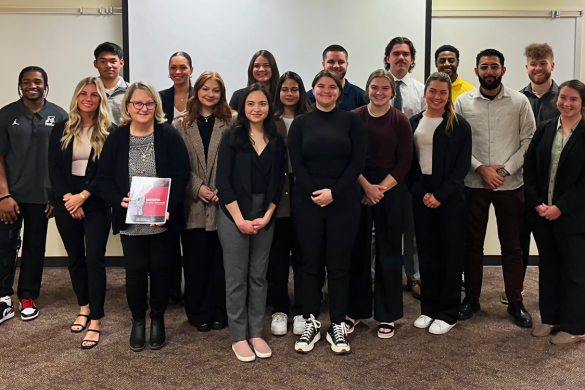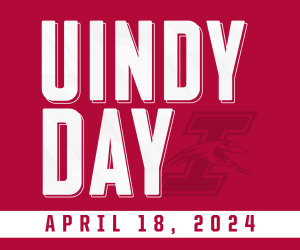
Professor of History and Political Science Larry Sondhaus gave a lecture about the impact of World War I. This year is the centennial of the end of the war, which came to a close in armistice on November 11, 1918. Photo by Gysai Durgans
As the centennial of the end of the first world war approaches, the University of Indianapolis held a symposium to educate students on its importance not only in decades past, but its role in shaping the modern world order.
The symposium, held on Jan. 29, featured a lecture from Professor of History and Political Science Larry Sondhaus, who is an expert on World War I. The event featured photos of soldiers, maps, and weaponry from the conflict, the significance of which were described by Sondhaus.
Although the war concluded a century ago this November, Sondhaus connected it to relatively modern concerns, such as terrorism.
“It [the outbreak of WWI] is especially kind of interesting in our own time when we talk more about terrorism, since 9/11, then we had previously,” Sondhaus said. “We have [in WWI] a 19-year-old gunman, in an act of terror, killing the heir to the throne of one of the major countries—Gavrilo Princip assassinating the Archduke Francis Ferdinand at Sarajevo. And out of that you have this chain reaction of countries declaring war on each other that leads all of Europe and ultimately the whole world pretty much into a war in which tens of millions of people die.”
Sondhaus explained not only the outbreak of the war, but the major events, innovative artillery and pivotal battles that determined its outcome. Another central theme of the evening was the understanding of past events in coping with modern conflicts. Senior political science and international relations major Erin O’Riley said that she appreciated how applicable lessons from the event are to modern day.
“He [Sondhaus] is really engaging, and I find the topic interesting,” O’Riley said. “ I love that you can apply history to modern conflicts.”
Sondhaus traced American global influence back to WWI, describing how former President Woodrow Wilson chose to join the war not only to tip the scale in the favor of the Allies, but to secure the United States’ position as a major player in the subsequent world order—or system of controlling international events—and one that could reasonably preside over the eventual post-conflict and set the terms for peace.
The lasting legacy of WWI, Sondhaus said, is a warning about how relatively isolated events, when mishandled, can escalate into a major event with disastrous consequences. Sondhaus also mentioned how alliances, even well-intentioned, can escalate conflicts and drag nations into disputes. Sondhaus gave the example of the current NATO alliance, which includes many European countries. Should any of those countries be threatened, the United States would be required to intervene.
“What if Vladimir Putin decides to send troops across the border into one of those countries the way he sent troops across the border into Ukraine?” Sondhaus said. “What do we do then? So, when you’ve got a system that includes triggers, the world…Well, in some cases that might make people feel safer because you know somebody has your back, but in a way it also makes the world a more dangerous place.”
Sophomore history major Kelly Wolf agreed with Sondhaus’ sentiment, and said that the modern world should learn from its history so conflicts like WWI can be prevented before the first domino falls.
“It’s just really interesting, how it happens. How it was fought was very different and new,” Wolf said. “We need to learn from WWI [that] we’re all in this together. We need to be more conscious of what our decisions can bring.”






